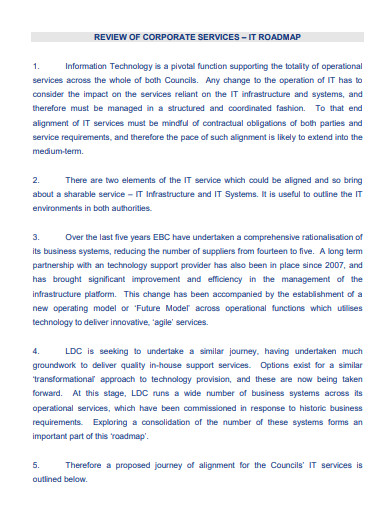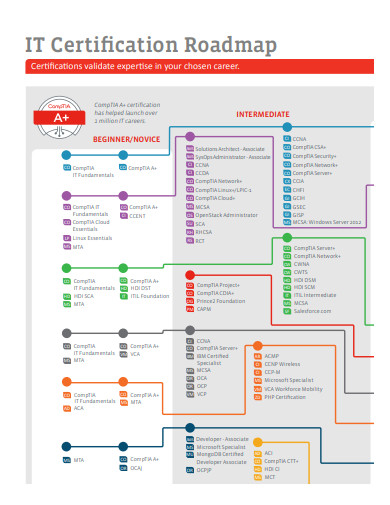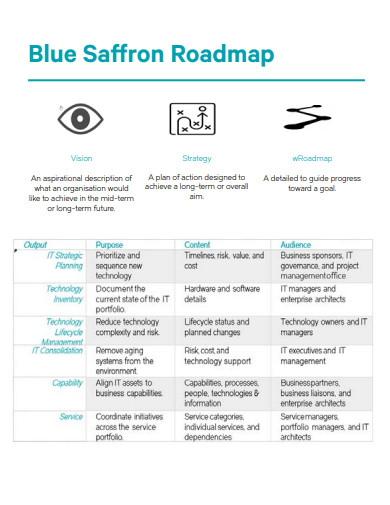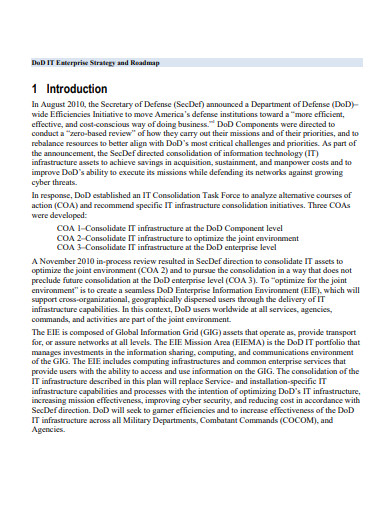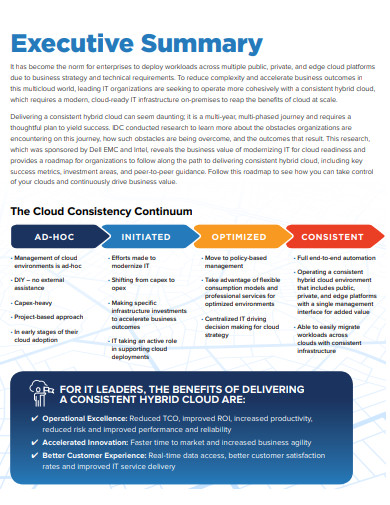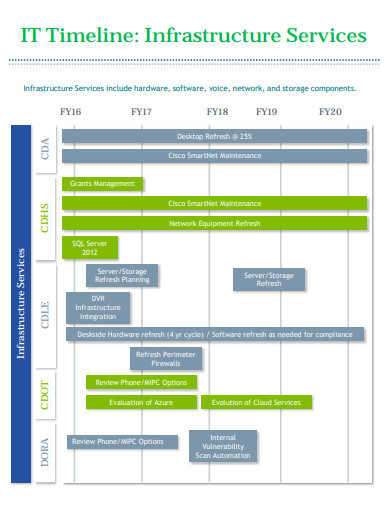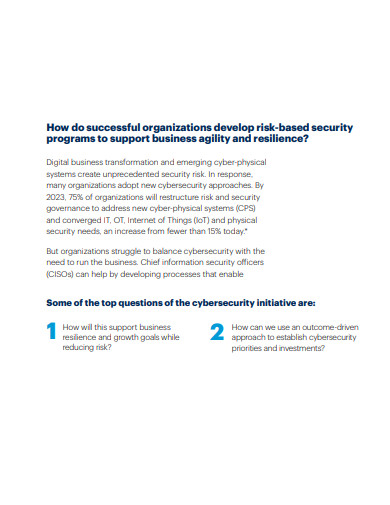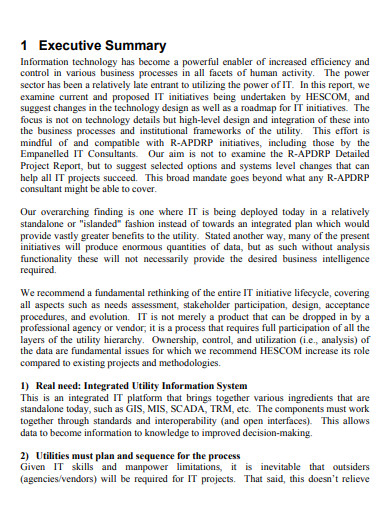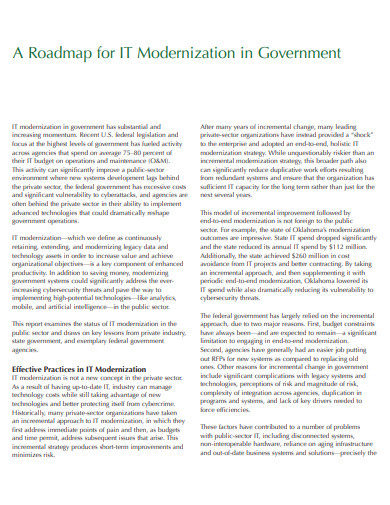A product roadmap conveys strategic plans that will influence how the organization deals with its consumers and clients in general (through new product releases, feature updates, and so on), whereas an IT roadmap conveys plans that will directly influence only the company’s internal workflow. Some companies even make their product roadmaps available to the general public. An IT roadmap’s audience, on the other hand, is usually always limited to a company’s internal teams, such as the IT department, the operations department, or the executive team.
10+ IT Roadmap Samples
A strategic IT roadmap connects corporate objectives to the information technology strategy required to achieve them. IT roadmaps are strategic papers that outline how your company will develop and maintain technology solutions to help you achieve your goals. Technology leaders can use an information technology roadmap to plan ahead and avoid putting out fires. It’s a declaration of intent that guides innovation and transformation. It’s a strategic tool that can assist visualize both long- and short-term plans effectively. In a nutshell, it explains where you are now and where you intend to go in the coming years. Depending on the area for which you want to design a course, there are various distinct forms of roadmaps.
1. IT Roadmap
2. IT Certification Roadmap
3. IT Strategy and Roadmap
4. IT Enterprise Strategy and Roadmap
5. IT Service Roadmap Assessment
6. Sample IT Roadmap
7. Simple IT Roadmap
8. Formal IT Roadmap
9. IT Roadmap for Cybersecurity
10. IT Roadmap Format
11. Printable IT Roadmap
Types of Roadmaps
- Service roadmap – The IT Services that you supply to the organization are the focus of the service roadmap. These are particularly handy when discussing which services you intend to retire or spin up in the next years. All of your services are listed on the service roadmap. It allows you to see at a glance: the services you’re spinning up; the services you’re maintaining; the services that are in the process of being retired; and the services that will substitute any services that are about to be retired.
- Infrastructure hardware roadmap – The focus of an infrastructure hardware roadmap is on the equipment that is currently in use. This is my preferred method of demonstrating to senior IT leadership when distinct models of equipment will be phased out. The infrastructure hardware roadmap is most useful in regions where there is a lot of equipment. This one is also compatible with any spreadsheet program.
- Strategy roadmap – A strategy, also known as a strategic intent roadmap, lays out the work ahead based on the organization’s strategic goals. This type of roadmap is a great method to see your strategic plan in action. The organizational goals are usually on the left side of this form of roadmap, with a Gannt style timetable describing the execution schedule. You can also show individual initiatives if there are numerous supporting projects that contribute to a bigger strategic goal.
- Technology roadmap – The technology roadmap usually shows several projects that support your organization’s technological stacks. This form of roadmap is usually extremely high level, and it’s fantastic for showing how your goods fit into your broader technology portfolio. This is comparable to a strategic plan. However, rather than focusing on the organization’s strategic goals, it closely mimics your organizational structure. The technological roadmap is what you need if you want to know what your network team, applications, service delivery, and other organizations have planned at a glance.
FAQs
What are the benefits of IT roadmap?
Integrating the tasks and objectives of your IT or operations team into a strategic-level view can make it easier for your team to recognize which items correspond with your company’s broader strategic goals and which do not, and to prioritize resources accordingly.
When your IT team can see its departmental projects and goals from a strategic perspective (which a roadmap can provide), they’ll be better able to clean out the processes and systems that are costing the company money and redirect those resources to more forward-thinking efforts.
Finally, if your IT/ops teams can see their prospects of success to the company at a glance, they’ll be far more motivated to stick on top of mission-critical items that could hinder the organization’s technology backbone, such as an enterprise software license that needs to be renewed or an internal system that requires to be improved by a certain date.
What are the common types of IT roadmaps?
- Enterprise IT roadmap
- IT project roadmap
- IT architecture roadmap
- Engineering IT roadmap
As you can see, depending on your situation, there are various different types of roadmaps that you can utilize. I’ve just provided a few samples, but there are plenty more to select from. Whatever style of roadmap you use, keep in mind that the listener is the one who communicates. Know who your roadmap’s intended audience is and ensure the roadmap you chose reflects their interests.
Related Posts
FREE 10+ Quality Roadmap Samples in MS Word | MS Excel | PowerPoint | Apple Pages | Google Docs | Google Sheets | Slides | Keynote | PDF
FREE 10+ Timeline Roadmap Samples in MS Word | MS Excel | PowerPoint | Apple Pages | Google Docs | Google Sheets | Slides | Keynote | PDF
FREE 10+ Goals Roadmap Samples in MS Word | MS Excel | PowerPoint | Apple Pages | Google Docs | Google Sheets | Slides | Keynote | PDF
FREE 10+ HR Roadmap Samples in MS Word | MS Excel | PowerPoint | Apple Pages | Google Docs | Google Sheets | Slides | Keynote | PDF
FREE 10+ Personal Roadmap Samples in Word | Google Docs | Google Slides | Apple Keynote | PowerPoint | Apple Pages | PDF
FREE 10+ Development Roadmap Samples in Word | Google Docs | Google Sheets | Excel | Slides | Keynote | PPT | PDF
FREE 10+ Training Roadmap Samples in MS Word | Google Docs | Google Slides | Apple Keynote | PowerPoint | Apple Pages | PDF
FREE 10+ Management Roadmap Samples in Word | Google Docs | Google Sheets | Excel | Slides | Keynote | PPT | PDF
FREE 10+ Program Roadmap Samples in Word | Google Docs | Google Sheets | Excel | Slides | Keynote | PPT | Pages | PDF
FREE 10+ Project Roadmap Samples in MS Word | Google Docs | Google Slides | Google Sheets | PPT | MS Excel | Apple Pages | Apple Numbers | PDF
FREE 10+ Process Roadmap Samples in MS Word | Google Docs | Google Sheets | PPT | MS Excel | Apple Pages | Apple Numbers | PDF
FREE 10+ Strategy Roadmap Samples in MS Word | Google Docs | Google Sheets | PPT | MS Excel | Apple Pages | Apple Numbers | PDF
FREE 5+ Sales Plan Roadmap Samples in PDF
FREE 15+ Software Roadmap Samples in PDF
FREE 6+ Business Roadmap Samples in PDF

